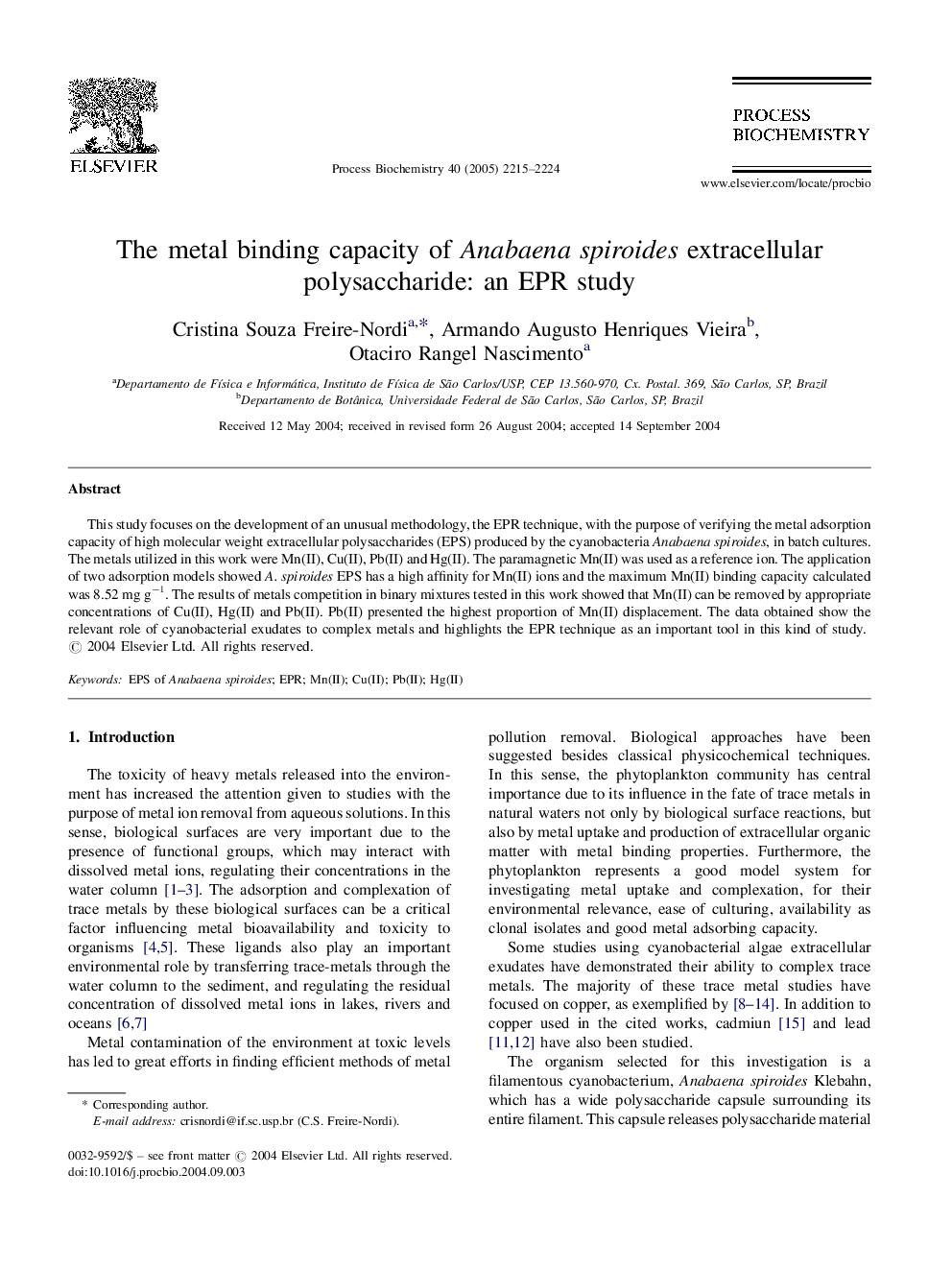| Article ID | Journal | Published Year | Pages | File Type |
|---|---|---|---|---|
| 36705 | Process Biochemistry | 2005 | 10 Pages |
This study focuses on the development of an unusual methodology, the EPR technique, with the purpose of verifying the metal adsorption capacity of high molecular weight extracellular polysaccharides (EPS) produced by the cyanobacteria Anabaena spiroides, in batch cultures. The metals utilized in this work were Mn(II), Cu(II), Pb(II) and Hg(II). The paramagnetic Mn(II) was used as a reference ion. The application of two adsorption models showed A. spiroides EPS has a high affinity for Mn(II) ions and the maximum Mn(II) binding capacity calculated was 8.52 mg g−1. The results of metals competition in binary mixtures tested in this work showed that Mn(II) can be removed by appropriate concentrations of Cu(II), Hg(II) and Pb(II). Pb(II) presented the highest proportion of Mn(II) displacement. The data obtained show the relevant role of cyanobacterial exudates to complex metals and highlights the EPR technique as an important tool in this kind of study.
